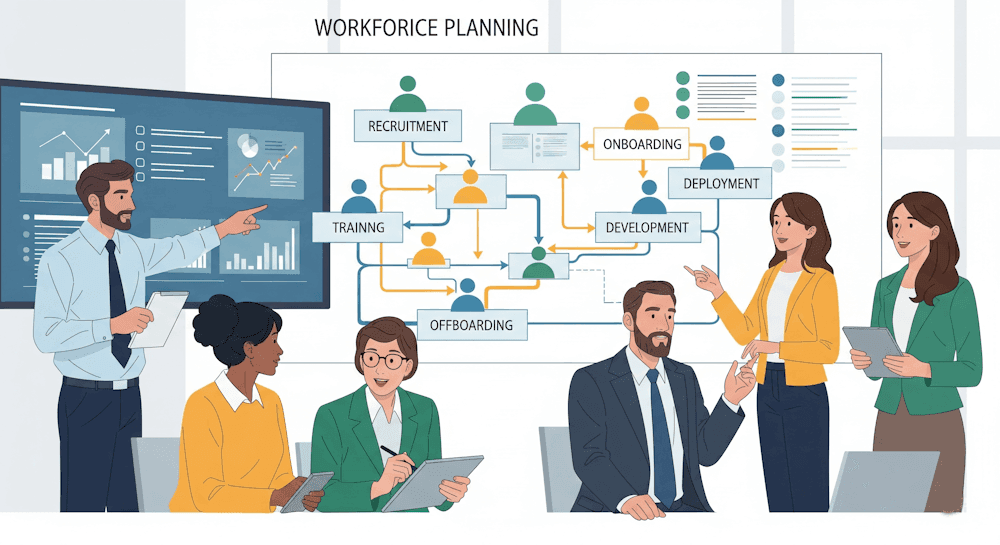Let’s face it—no matter how solid a business plan looks on paper, things don’t always go as expected. In a world where change is constant, companies can’t rely on just one method when it comes to figuring out how many people they’ll need in the future. That’s why most organisations prefer to use a mix of techniques when forecasting human resource (HR) demand. Two common and practical ones are Managerial Judgement and Ratio-Trend Analysis.
1. Managerial Judgement
This is probably the most straightforward way to predict future workforce needs. Basically, managers sit down, talk it out, and come up with a number that they believe will meet the company’s future staffing requirements. It can follow two styles:
- Bottom-up approach – Here, department heads give their own forecasts, and those numbers move up the ladder to top management.
- Top-down approach – In this case, top-level managers prepare estimates for the entire company and break them down by department. These are then reviewed with department heads.
But honestly, neither method is perfect on its own. What usually works better is using both approaches together.
Here’s how that looks: department heads get some general guidelines and, after going over things with the HR planning team, they create their department forecasts. Meanwhile, senior HR managers prepare their version of the company-wide estimate. Once both are ready, a committee made up of departmental managers and HR leaders sits together to compare the two. After some back-and-forth, they settle on a final number that’s sent for approval at the top level.
This method works best in smaller businesses or places where there isn’t much historical data to rely on.
2. Ratio-Trend Analysis
Now, this one’s a bit more numbers-driven and tends to be much faster. Ratio analysis means looking at past data—like how many employees were needed to meet a certain level of sales—and then using that ratio to predict what future needs might look like. Of course, you’ve got to tweak those numbers a bit to account for any expected changes in how the company operates.
This method is all about finding patterns. If a company needed 100 employees when sales were at ₹50 lakhs, and now they expect ₹1 crore in sales, the ratio helps figure out how many workers they'll probably need.
According to Dessler and colleagues (2015), ratio analysis works by linking staff numbers to specific factors—like how much the company produces or how it was staffed before. For example:
- If you’re predicting needs in production jobs, use data related to the goods or services produced.
- If you’re forecasting admin or support staff, past employment figures might be more helpful.
But keep in mind, this technique works best when things haven’t changed much over time. If the company’s scaling fast or switching to new systems, those old ratios might not hold up. Also, if the historical data isn’t accurate, your predictions could be way off.
On the other hand, trend analysis (another part of this technique) is useful when the business environment is pretty stable and predictable. Ratio analysis, though, gives you more flexibility since it considers different influencing factors.
When Ratio Analysis Makes the Most Sense
This approach is particularly handy for companies that face seasonal changes. If your business booms during the holidays or slows down in the off-season, ratio analysis helps forecast how many employees you'll need in each cycle.
But again, the trick here is using relevant and up-to-date data. And don’t forget to factor in things like growth in production or company expansion. Ignoring these could lead to under- or overestimating your staffing needs.
Wrapping Up
At the end of the day, both Managerial Judgement and Ratio-Trend Analysis have their own strengths. One relies on the experience and gut instinct of managers; the other uses historical numbers and patterns to guide decisions. In many cases, using a blend of the two can give you the best shot at forecasting your HR needs with some degree of confidence.
Because let’s be honest—no forecast is ever 100% spot on. But the closer you get, the better you can prepare your team (and your business) for what’s coming next.
Read the related article -






